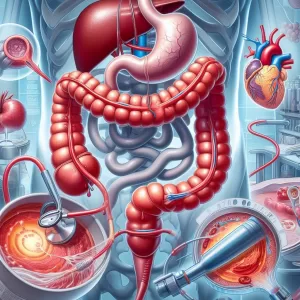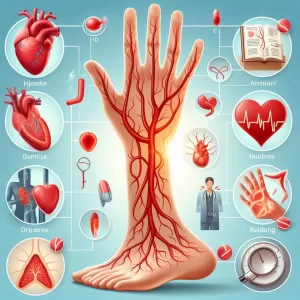What is Paediatric Second Opinion: Overview, Benefits, and Expected Results
Headline: The Power of Positive Thinking
Body: Positive thinking is a powerful tool that can help you achieve your goals and live a happier life. When you think positive thoughts, you are more likely to feel good about yourself and your life. You are also more likely to take action and make things happen.
``` Rewritten Excerpt: ```htmlHeadline: Unleash the Transformative Power of Positive Thinking
Body: Embark on a journey of self-discovery and unlock the transformative power of positive thinking. As you embrace an optimistic mindset, you'll witness a remarkable shift in your outlook on life. Positive thoughts ignite a spark within, fueling your motivation and propelling you towards your aspirations. Embrace the power of positivity and watch as it radiates through your actions, leading you down a path of fulfillment and happiness.
``` Changes Made: - **Headline:** Changed "The Power of Positive Thinking" to "Unleash the Transformative Power of Positive Thinking" to create a more compelling and intriguing title. - **Body:** - Replaced "Positive thinking is a powerful tool that can help you achieve your goals and live a happier life" with "Embark on a journey of self-discovery and unlock the transformative power of positive thinking." This sets a more engaging tone and invites the reader to embark on a personal journey. - Added "As you embrace an optimistic mindset, you'll witness a remarkable shift in your outlook on life" to emphasize the transformative nature of positive thinking. - Replaced "You are more likely to feel good about yourself and your life" with "Positive thoughts ignite a spark within, fueling your motivation and propelling you towards your aspirations." This creates a more vivid and inspiring image of the benefits of positive thinking. - Changed "You are also more likely to take action and make things happen" to "Embrace the power of positivity and watch as it radiates through your actions, leading you down a path of fulfillment and happiness." This highlights the tangible impact of positive thinking on one's actions and overall well-beingDefinition and Overview
A paediatric second opinion is an appointment with a different physician to compare his diagnosis and treatment recommendation to that of the first physician visited. It basically means consulting two different doctors regarding the same case. This is commonly sought in cases where there are several possible treatment options, each of which may lead to different results. It is recommended that parents and guardians seek a second opinion when trying to decide on the best course of treatment for their children, especially when a serious medical condition is involved. Doing so will help educate them about their different options and the advantages and disadvantages of each. It also allows them to compare different doctors to find the one they feel most comfortable working with or the one with the most experience in treating the patient’s condition. However, seeking a second opinion is sometimes not an option, especially if a medical emergency is involved.
Who Should Undergo and Expected Results
Parents can get a paediatric second opinion when:
- They have doubts about the initial diagnosis of their child’s condition
- They are provided with a treatment plan that is risky, unconventional, or controversial
- The current treatment plan recommended by the primary doctor is not working
- The doctor wants to change or add to an ongoing treatment
- A major, life-threatening surgery was suggested as treatment
- The child is diagnosed with a serious condition
- They want to explore different treatment options
- They want to compare different doctors
- They don’t feel comfortable with their current doctor
- They need the opinion of a specialist or a doctor who is more experienced in the area of concern
- There is a new treatment method or a clinical trial that the parents are willing to try
However, seeking a second opinion is not possible in cases of emergencies (such as traumatic injuries) where the patient requires immediate medical care.
Below are the two types of second opinion consultations:
Referral from the original doctor – In cases where the opinion of a specialist is required, the child’s paediatrician may refer them to a doctor who is an expert on the patient’s medical condition. For example, if a patient seems to have an underlying issue causing him to have recurrent ear infections, the paediatrician may refer them to an ENT specialist. Another example is when a paediatric oncologist refers a patient suffering from a rare type of cancer to an oncologist who is more experienced with the said type of cancer.
Self-referral – A self-referral is when parents seek a second opinion on their own, without a referral from their primary paediatrician.
It is generally recommended that parents work together with their primary care provider in all matters regarding their child’s health to ensure continuity of care. However, in cases where the parents do not feel confident about their doctor’s opinion on special cases, they are free to seek a second opinion on their own.
At the end of a second opinion consultation, the parents may be faced with three possible results:
- The diagnosis and treatment recommendations of both doctors are similar.
- The diagnosis is the same, but the treatment recommendation is different.
- The second doctor provides a different diagnosis and treatment recommendation, allowing parents to compare two different options and choose which one they feel most confident with.
How the Procedure Works
A paediatric second opinion will go almost the same way as an initial consultation with any doctor. If the appointment is due to a self-referral, it is the parents’ responsibility to bring all pertinent documents and provide all important information about their child’s health so that the new doctor will be able to make an accurate diagnosis and treatment recommendation. These include:
- All diagnostic materials such as a biopsy slides
- All imaging scan results such as x-ray, CT scan, MRI, bone scan, and PET scan, among others
- Clinical reports
- Existing treatment plan, if any
If the appointment is scheduled upon the referral of a primary paediatrician, the paediatrician will be the one to prepare a copy of the child’s medical records so the new doctor will better understand the case.
The discussion with the second doctor will involve:
- Medical history, especially history of allergies
- Family history
- Main symptoms or complaints
- Previous and ongoing treatments
- Existing and previous medications
- Previous lab tests – Most doctors will need lab tests to make diagnosis and treatment recommendation. However, in most cases, the lab tests they need have already been performed upon the request of the first doctor. Coordinating with the original doctor will save the patient from undergoing the same tests, unless there is a reason to believe that the results may have changed.
The most frequently asked questions parents have during a second opinion consultation include:
- Are there other ways to confirm this diagnosis?
- Do you recommend the same course of treatment?
- If not, what other treatment option do you recommend and why is it better?
- Are you an expert in this kind of treatment?
- What is your experience level and success rating with this kind of treatment?
- What are the risks of this treatment?
Possible Risks and Complications
There are some risks and disadvantages involved in seeking a second opinion. One of the biggest drawbacks of seeking a second opinion without a referral from the same primary care provider is the new doctor’s lack of familiarity with the child’s medical history. The new doctor, without the knowledge of the child’s overall health and previous health conditions, may put the child through several time-consuming, stressful and costly laboratory tests to obtain the same level of knowledge that the original paediatrician already has.
In some cases, patients also seek a second opinion and try to keep it a secret from their primary doctor, with the fear of offending the latter. However, if the parents really want to get the opinion of a different doctor, it is best if they inform their primary doctor about it so the latter can help them obtain an appointment more quickly and prepare the necessary medical reports. Paediatricians generally understand the need for a specialist especially in crucial circumstances or serious chronic diseases.
Reference:
- Hagan JF, Duncan PM. Maximizing children’s health. In: Kliegman RM, Behrman RE, Jenson HB, Stanton BF, eds. Nelson Textbook of Pediatrics. 19th ed. Philadelphia, PA: Elsevier Saunders; 2011:chap 5.
/trp_language]
## **Q:** What is Paediatric Second Opinion?
**A:** A paediatric second opinion involves seeking the expertise of another medical professional, typically a specialist in child healthcare, after receiving an initial diagnosis or treatment plan for a child’s medical condition. This is done to obtain an alternative medical perspective and to ensure that the child receives the most appropriate and comprehensive care. Several healthcare providers offer paediatric second opinions, including paediatricians, specialist doctors, paediatric surgeons, geneticists, and even alternative medicine practitioners.
## **Q:** What are the Benefits of Seeking a Paediatric Second Opinion?
**A:** There are several benefits to obtaining a second opinion in paediatrics, including:
– Improved Diagnosis: The second opinion provider may have access to different diagnostic tools and expertise, leading to a more accurate or comprehensive diagnosis.
- Alternative Treatment Options: The second opinion provider may offer different treatment options that were not considered earlier, providing more choices for the child’s care.
– Increased Confidence in Treatment: Receiving a second opinion can provide parents with more confidence in the treatment plan and help them make informed decisions about their child’s care.
– Early Detection of Complications: A second opinion may identify potential complications or challenges that the initial diagnosis or treatment plan may have overlooked, allowing for early intervention.
– Peace of Mind: Seeking a second opinion can offer parents peace of mind, knowing that they have explored all available options and are making the best possible decisions for their child’s health.
## **Q:** What Expected Results Can Be Gained from Getting a Paediatric Second Opinion?
**A:** The specific results of a paediatric second opinion may vary depending on the circumstances of the case, but common expected outcomes include:
– Confirmation or Modification of Diagnosis: The second opinion provider may confirm the initial diagnosis or suggest modifications based on additional information or perspectives.
– Different Treatment Approach: The second opinion provider may recommend a different treatment plan, either as an alternative or in conjunction with the initial plan.
– Additional Testing or Evaluation: A paediatric second opinion may lead to additional testing or evaluations to gather more information and arrive at a more precise diagnosis.
– Early Identification of Risks: The second opinion may uncover potential risks or complications that weren’t initially considered, allowing for proactive measures to mitigate them.
– Increased Confidence and Understanding: Parents often gain increased confidence and understanding of their child’s condition and treatment options after seeking a second opinion.
One comment
Leave a Reply
Popular Articles








Pediatric Second Opinions: Evaluating and Optimizing Care for Children’s Health